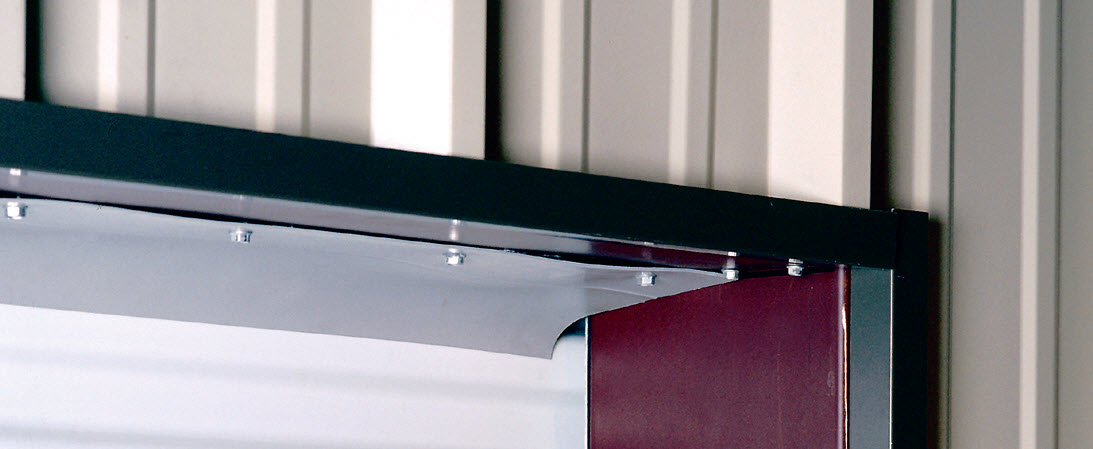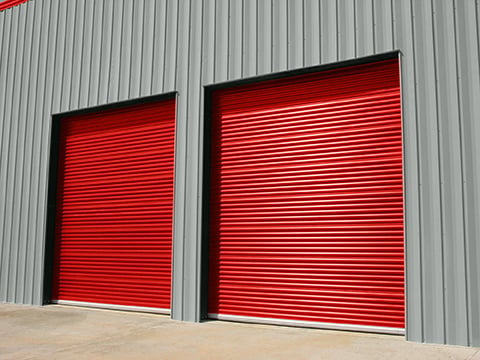Why Do Commercial Doors Need Weather-Stripping and What are the Best Options?
With costs of goods rising across the board, the last thing you want to do is throw money out the window (or door) this winter. However, you can reduce energy bills and keep other costly critters out of your building if you properly install weather-stripping on your commercial steel doors.
What is Weather-Stripping?
Weather-stripping, or weather seal, is a low-cost solution that prevents the outside weather from entering the inside of your building. It can be made from various materials, including silicone, neoprene, or vinyl. And, you can install it at the door frame’s top, sides, and bottom.
Weather-Stripping Benefits
Weather-stripping your doors is essential to reduce energy costs and protect your building from unwanted elements.
- Minimizes weather damage: Whether it’s hot or cold outside, adding weather-stripping around your metal roll-up doors improves insulation and creates a secure seal that protects your building from outdoor weather. It’s also an excellent barrier against other potentially-damaging annoyances, such as rain, dust, dirt, and pests.
- Energy savings: Who knew a slender synthetic rubber strip could be so handy when saving money? According to Energy Star, proper weather-stripping can generate up to a 10 percent reduction in your energy bill. So install weather-stripping to save money and keep your HVAC from working overtime.

Types of Weather-stripping
From door sweeps with brushes to EPDM-rubber seals, many seals and strips insulate different types of doors. Below are a few common ones used on commercial and industrial doors.
- Clip-on Weather-stripping: Clip-on weather-stripping seals air leaks surrounding your commercial door. You can buy it in a single vinyl weather seal to attach to the door's guide on the non-coil side.
- Brush Weather-stripping: Brush weather-stripping is a brush mounted to the side or bottom of the door. It delivers more flexibility than a vinyl strip, allowing a complete door seal. In addition, brush weather-stripping is more durable and sustainable, providing better resistance against wear and deterioration.
- Header Seal: Header seal weather-stripping includes a six-inch brush and a large aluminum retainer. It attaches directly to the top of the door, or header, and extends up to five inches to the door curtain, forming an effective barrier against environmental elements.
- Top Draft Stop: Top draft stop weather-stripping prevents unwanted airflow from penetrating your metal door and entering your building. Mounted to the door's curtain, it provides a two-and-a-quarter-inch weather seal between the door and the header.
- Door Astragal: A door astragal made of silicone or PVC closes the gap between pairs of doors, or you can use it on a single door. It attaches to the bottom bar and provides contact with the floor and door threshold to create a seal.
Repair or Replace When Worn
If you already have weather-stripping around your exterior doors, it could be time to repair or replace it. Ensure you continue to assess the condition of all insulation efforts to gain the maximum benefit.
If you notice loose or worn weather-stripping, consider reattaching it or replacing it entirely. Weather-stripping is essential to commercial door hardware, so don’t forget to check that it’s doing its job.
In conclusion, commercial door weather-stripping is a cost-effective and easy way to reduce air leaks. In addition, it generates energy savings and protects your commercial building from outside weather conditions. So keep cold air out of your building this winter and use weather-stripping on your Janus International doors.

